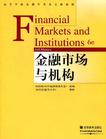金融市场与机构
出版时间:2005-1 出版社:高等教育 作者:何丽芬 页数:468
Tag标签:无
前言
自教育部在《关于加强高等学校本科教学工作提高教学质量的若干意见》【教高(2001)4号】中提出双语教学的要求后,各地高校相继开设了一系列双语教学课程。这对提高学生的学科和外文水平,开阔国际视野,培养创新型人才起到了重要的作用;一大批教师也逐渐熟悉了外文授课,自身的教学水平和能力得到较大提高,具备国际学术思维的中青年教师脱颖而出。同时,经过近几年的双语教学实践,国外原版教材量大、逻辑不够清晰、疏离中国现实等问题也影响了双语教学的效果。因此,对外版教材进行本土化的精简改编,使之更加适合我国的双语教学已提上教材建设日程。 为了满足高等学校经济管理类双语课程本土化教学的需要,在教育部高等教育司的指导和支持下,高等教育出版社同Thomson Leaming等国外著名出版公司通力合作,在国内首次推出了金融、会计、经济学等专业的英文原版改编教材。本套教材的遴选、改编和出版严格遵循了以下几个原则: 1.择优选取权威的新版本。在各专业选书论证会上,我们要求入选改编的教材不仅是在国际上多次再版的经典之作的最新版本,而且是近年来已在国内被试用的优秀教材。 2.改编后的教材力求内容规范简明,逻辑更加清晰,语言原汁原味,适合中国的双语教学。选择的改编人既熟悉原版教材内容又具有本书或本门课程双语教学的经验;在改编过程中,高等教育出版社组织了知名专家学者召开了数次改编和审稿会议,改编稿征求了众多教师的意见。 3.改编后的教材配有较丰富的辅助教学支持资源,教师可在网上免费获取。同时,改编后的教材厚度适中,定价标准较低。 由于原作者所处国家的政治、经济和文化背景等与我国不同,对书中所持观点,敬请广大读者在阅读过程中注意加以分析和鉴别。 此次英文改编教材的出版,得到了很多专家学者的支持和帮助,在此深表谢意!我们期待这批英文改编教材的出版能对我国经济管理类专业的教学能有所帮助,欢迎广大读者给我们提出宝贵的意见和建议。
内容概要
《金融市场与机构》从讨论金融市场的资金流动、利率的决定和利率结构出发,系统阐述了金融市场的运作全貌,不仅全面介绍了债务证券市场、权益证券市场、衍生证券市场,而且深入分析了各种金融工具、衍生工具的估价与风险,《金融市场与机构》还着重描述了金融机构对各类金融市场的利用及其在金融市场上所扮演的角色。《金融市场与机构》适合作为金融、经济、工商管理专业本科生、研究生和MBA“金融市场学”或“金融市场与机构”课程的教材。对于金融业的研究人员和从业人员,《金融市场与机构》也是一本难得的专业参考书。
作者简介
杰夫·马杜拉(Jeff Madura),美国佛罗里达亚特兰大大学金融系教授,他在《金融与数量分析》、《货币、信贷与银行》、《风险与保险》等众多一流刊物上发表了有关银行与金融市场研究方面的学术论文。杰夫·马杜拉教授因其在教学和研究方面的突出贡献而多次获奖,并曾担任商业银行、证券公司的顾问,还曾任美国南方金融协会与东方金融协会的理事以及南方金融协会会长。
书籍目录
PART I1 Overview of the FinancialEnvironment2 Chapter 1Role of Financial Markets and InstitutionsOverview of Financial MarketsMoney versus Capital MarketsPrimary versus Secondary MarketsOrganized versus Over-the-Counter MarketsSecurities Traded in Financial MarketsMoney Market SecuritiesCapital Market SecuritiesDerivative SecuritiesValuation of Securities in Financial MarketsMarket Pricing of SecuritiesMarket EfficiencyFinancial Market RegulationDisclosureOther RegulationsFinancial Market GlobalizationRole of the Foreign Exchange MarketForeign Exchange RatesRole of Financial Institutions in Financial MarketsRole of Depository Institutions 11Role of Nondepository financial InstitutionsComparison of Roles among Financial InstitutionsOverview of Financial Institutions 19Competition between Financial InstitutionsConsolidation of Financial InstitutionsParticipation in Financial MarketsGlobal Expansion by Financial Institutions30 Chapter 2Determination of Interest RatesLoanable Funds Theory 30Household Demand for Loanable FundsBusiness Demand for Loanable FundsGovernment Demand for Loanable FundsForeign Demand for Loanable FundsAggregate Demand for Loanable Fund~Supply of Loanable Funds 34Equilibrium Interest Rate 36Economic Forces That Affect Interest RatesImpact of Economic Growth on Interest RatesImpact of Inflation on Interest Rates 39Impact of the Money Supply on Interest RatesImpact of the Budget Deficit on Interest RatesImpact of Foreign Flows of Funds on Interest RatesSummary of Forces That Affect Interest RatesEvaluation of Interest Rates over TimeForecasting Interest Rates53 ChapterStructure of Interest RatesCharacteristics of Debt Securities That Cause Their Yields to VaryCredit (Default) RiskLiquidityTax StatusTerm to MaturitySpecial ProvisionsExplaining Actual Yield DifferentialsYield Differentials of Money Market SecuritiesYield Differentials of Capital Market SecuritiesEstimating the Appropriate YieldA Closer Look at the Term StructurePure Expectations TheoryLiquidity Premium TheorySegmented Markets TheoryResearch on Term Structure TheoriesIntegrating the Theories of the Term StructureUses of the Term StructureImpact of Debt Management on Term StructureImpact of September 11 on the Term StructureHistorical Review of the Term StructureInternational Structure of Interest RatesInteg rative Problem: Interest Rate Forecasts and Investment DecisionsPART II85 The Fed and Monetary Policy86 Chapter 4Functions of the FedOrganization of the FedFederal Reserve District BanksMember BanksBoard of GovernorsFederal Open Market Committee (FOMC)Advisory CommitteesIntegration of FederaI Reserve ComponentsMonetary Policy ToolsOpen Market OperationsAdjusting the Discount RateAdjusting the Reserve Requirement RatioComparison of Monetary Policy ToosImpact of Technical Factors on FundsFed Contr01 of the Money SupplyLimitations of Controlling Money SupplyMonetary Control Act of 1980G10bal Monetary PolicyA Single Euro Zone Monetary PolicyGlobal Central Bank CoordinationSummaryQuestions and Applications107 ChapterMonetary Theory and PolicyMonetary TheoryPure Keynesian TheoryQuantity Theory and the Monetarist ApproachTheory of Rational ExpectationsWhichTheoryisCorrect?Tradeoff Faced bv山e FedImpact ofOther Forces on the Trade offEconomic Indicators Monitored by the FedIndicators of Economic GrowthIndicators of InflationHow the Fed Uses IndicatorsLags in Monetary PolicyAssessing the Impact of Monetary PolicyForecasting Money Supp~MovementsForecasting the Impact ofMonetary PolicyIntegrating Monetary and Fiscal PoliciesHistoryMonetizing the DebtMarket Assessment ofIntegrated PoliciesG1obal Etiects of Monetary PolicyImpact of the DollarImpact of Global Economic ConditionsTransmission ofInterest RatesFed Policy during the Asian CrisisSummary 133·Questions and ApplicationsIntegrative Problem:Fed WatchingPART Ⅲ139 Debt Security Markets140 ChapterMoney MarketsMoney Market SecuritiesTreasury BillsCommercialPaperNegotiable Certificates of DepositRepurchase AgreementsFederal FundsBanker~AcceptancesInstitutional Use of Money Marketsvaluation of Money Market SecuritiesExplaining Money Market Price MovementsIndicators ofFuture Money Market Security PricesRisk of Money Market SecuritiesMeasuringRiskInteraction among Money Market YieldsGlobalization of Money MarketsEurodollar Deposits and EuronotesEuro-CommerciaI PaperPerformance ofForeign Money Market SecuritiesSummary 155-Questions and ApplicationsProblems162 ChapterBond MarketsBackground on BondsBondYieldsTreasury and Federal Agency BondsTreasury Bond AuctionTrading Treasury BondsTreasury Bond QuotationsStripped Treasury BondsInflation-Indexed Treasury BondsBrady BondsFederalAgency BondsMunicipal BondsTradingand QuotationsCorporate BondsPrivate Placements ofCorporate BondsCharacteristics of Corporate BondsTradingCorporateBondsCorporate Bond QuotationsJunk BondsHow Corporate Bonds Facilitate RestructuringInstitutional Use of Bond MarketsGlobalization of Bond MarketsEurobond MarketTax EgectsSummaryQuestions and Applications182ChapterBond Valuation and RiskBond Valuation ProcessBondValuationwith aPresentValue TableImpact of the Discount Rate on Bond ValuationImpact oftheTimingofPayments on Bond ValuationValuation ofBonds with Semiannual PaymentsUse ofAnnulty Tables for ValuationRelationships Between Coupon Rate,Required Return,and Bond PriceImplications for Financial InstitutionsExplaining Bond Price MovementsFactors That Affectthe Risk-Free RatePART ⅣG-1 Glossary
章节摘录
Forward contracts are contracts typically negotiated with a commercial bank that allow the purchase or sale of a specified amount of a particular foreign currency at a specified exchange rate on a specified future date.There is a forward market that facilitates the trading of forward contracts.This market is not in one visible place,but is essentially a telecommunicanbns network through which large Commercial banks match participants who wish to buy a currency forward with other participants who wish to sell a currency forward. Many of the commercial banks that offer foreign exchange on a spot basis also offer forward transactions for the widely trade,d currencies.By enabling a corporation to lock in the price to be paid for a foreign currency,forward purchases can hedge the corporatioffs risk that the currencys value may appreciate over time. St.Louis Insurance Company plans to invest about$20 million in Mexican stocks two months from now.Because the Mexican stocks are denominated in pesos,the amount of stock that can be purchased is dependent on the pesos value at the time of the purchase. If St.Louis Insurance Company is concerned that the peso will appreciate by the time of the purchase,it can buy pesos forward to lock in the exchange rate. A corporation receiving payments denominated in a particular foreign currency in the future can lock in the price at which the currency can be sold by selling that currency forward.
图书封面
图书标签Tags
无
评论、评分、阅读与下载
用户评论 (总计4条)
- 这本书是全英文哒,是老师推荐的。是以美国市场为背景,所以部分不适用于中国,老师会给讲到,据老师讲部分计算角标有错误,如果不幸上课没有听到,而是自己看的话,考试可能会背错公式导致计算失分啦
- 学习用书,用后在评
- 买的教材,英文的亚历山大,不过书不错
- 恩很好的书,上课使用很清楚。
推荐图书
- 医患双方的权益
- 同心曲
- 家电维修 大众版2005年第2期
- 打工妹 2005年第2-3期
- 电脑维护与应用2005年第9期
- 时尚健康 2005年第2期 总第81期
- 大众DV 大众摄影2005年2月B版
- 网球2005年9月号
- 新浪潮2005年6月总第252期
- 时尚杂志 先生风采 2005年第2期 总第199期
- 新闻人物 新娱乐 2005年第2期 总第23期
- 权利质权研究
- 国际法最新问题研究
- 外国司法体制若干问题概述
- 各国司法体制的宪法性规定
- 经济全球化与中国外资立法完善
- 罗马共和宪政研究
- 英语导游必读
- 沿海自驾三万里
- 中国导游十万个为什么
- 导游趣味讲解资料库
- 中国降水月季气候变化分析预测研究
- 民用航空气象服务与技术交流论文集
- 14CM中文政区万向地球仪
- 眼镜定配工职业资格培训教程
